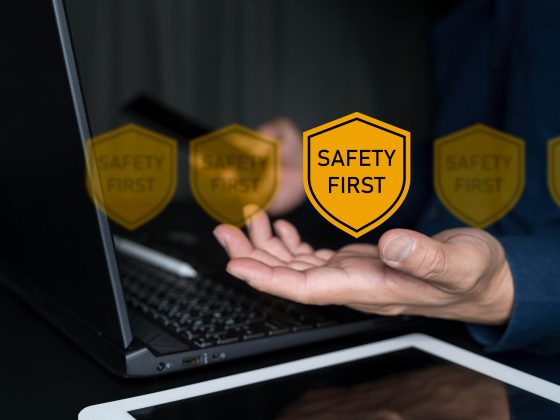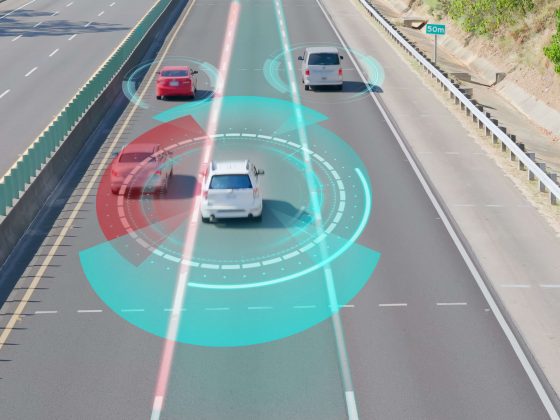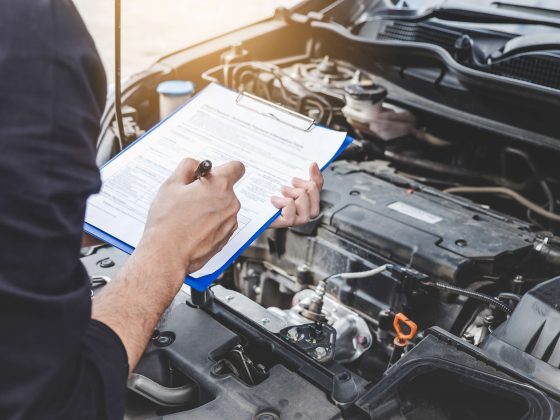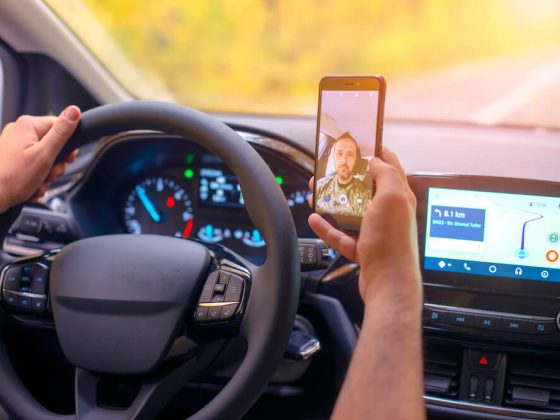Are you an aggressive driver? You may be and not even know it!
Use eTags© to Quickly Complete Your DMV Service. Renewals, Title Transfers and More, All Online!
From 2008 to 2012, aggressive driving resulted in 1,199 accidents and 1,380 fatalities in the US. Aggressive driving is a bigger issue than most people perceive it to be. It’s more than “road rage”. The National Highway Traffic Safety Administration (NHTSA) describes aggressive driving as “committing a combination of moving traffic offenses so as to endanger other persons or property” and we would add that the endangerment is not always intentional but, instead, simply careless. Sound like any of the drivers you’ve ever seen on the road?
Some of the moving traffic offenses that may endanger other people or surrounding property include:
- Driving above the legal speed limit
- Disregarding signal lights and traffic signs
- Recklessly changing lanes and passing other vehicles, bikes, and pedestrians
- Failure to stop or pull over to the side of the road for emergency vehicles or at a at a school crossing zone
- Performing dangerous maneuvers like tailgating and swerving
Aggressive Driving Laws
Only 15 states have addressed aggressive driving in their legislatures but only 11 of those states have established laws that define and penalize aggressive driving.
| State | How Aggressive is Defined |
| ARIZONA | Speeding in addition to one or more of the following:
· Failure to obey traffic control devices and signs · Passing on the right out of regular lanes of traffic · Unsafe lane change · Following another vehicle too closely · Failure to yield at a right of way · Direct hazard to another person or vehicle |
| DELAWARE | Driver must commit a minimum of three of the following:
· Failure to obey traffic control devices and signs · Passing on the right · Driving outside the lanes of traffic · Following another vehicle too closely · Failure to yield at a right of way · Failure to signal a turn or other maneuver · Passing a stopped school bus with stop signs active · Speeding |
| FLORIDA | Driver must commit a minimum of two of the following:
· Speeding · Unsafe or improper lane change · Following too closely · Failure to yield at a right of way · Improper passing · Failure to obey traffic control devices and signs |
| GEORGIA | Driver who purposely annoys, harasses, molests, intimidates, injures, or obstructs another person while performing one or more of the following:
· Overtaking and passing another vehicle · Violating traffic lane markings · Following another driver too closely · Violating signal, lane change, slowing or stopping laws; · Impeding traffic flows · Reckless driving |
| INDIANA | Driver must commit a minimum of three of the following:
· Following another driver too closely · Unsafe operation of a vehicle · Passing another vehicle on the right off of roadway · Stopping or slowing unsafely · Honking the horn for no reason · Failure to yield · Failure to obey traffic control device · Speeding · Repeatedly flashing headlights |
| MARYLAND | Driver must commit a minimum of three of the following:
· Failure to obey traffic control device · Overtaking and passing · Passing another vehicle on right · Driving on the lane area of roadways · Following too closely · Failure to yield right of way or speeding |
| NEVADA | When a driver speeds and commits at least two of the following all within a mile distance:
· Fails to obey traffic control device · Passes another vehicle on the right off of paved roadway · Following another vehicle too closely · Lane violation · Failure to yield right of way · Creating an immediate hazard on the roadway |
| NORTH CAROLINA | When a driver speeds recklessly, shows no regard for other drivers on the road and commits a minimum of two of the following:
· Running a red light or stop sign · Illegal passing other vehicles on the road · Failing to yield right of way · Following another vehicle too closely |
| RHODE ISLAND | When a driver is speeding and commits a minimum of two of the following:
· Failure to obey traffic control device · Overtaking on the right · Driving on the outside lanes of traffic · Following another vehicle too closely · Failure to yield right of way · Entering roadway unsafely · Failure to use turn signals · Failure to stop or yield at signs · Use of emergency lane for travel |
| VERMONT | When a driver is performing all of the following maneuvers:
· Following too closely · Crowding other vehicles · Harassing other drivers |
| VIRGINIA | Driver is a danger to other drivers on the road by harassing, intimidating, injuring, or obstructing another driver while committing one of the following:
· Failure to drive on the right side of highway · Driving outside of marked lanes · Following another driver too closely · Failure to yield or stop before entering roadway · Failure to obey traffic control device · Passing when overtaking a vehicle · Passing on right, failure to yield right of way · Speeding · Stopping a vehicle on a highway |
Information provided by GHSA and NCSL
The fines for breaking these aggressive driving laws will vary for each state. However, someone who violates these laws can expect anywhere from the requirement to attend an aggressive driving course, a misdemeanor charge, or a serious criminal charge. The penalties can include fines in excessive of $1,000 and 90 days in jail or more.
Ticketing Aggressive Cars and Trucks Programs
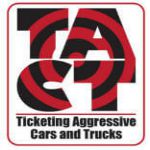 Throughout the United States, there are many cities that are adopting a Ticketing Aggressive Cars and Trucks program (TACT). While tackling aggressive driving is the main focus, there is also emphasis on addressing and reducing the number of truck-involved crashes and fatalities. Aggressive driving may not always be a factor in crashes involving trucks but it can certainly increase the number incidences and amplify the tragic outcomes.
Throughout the United States, there are many cities that are adopting a Ticketing Aggressive Cars and Trucks program (TACT). While tackling aggressive driving is the main focus, there is also emphasis on addressing and reducing the number of truck-involved crashes and fatalities. Aggressive driving may not always be a factor in crashes involving trucks but it can certainly increase the number incidences and amplify the tragic outcomes.
Enforcement, Education and Engineering – SPPD
The St. Petersburg Police Department (SPPD) in St. Petersburg, FL is one agency putting this program to work. “Where’s Jockers?” is the name of their TACT program, and it was created and initiated by Officer Mike Jockers. This TACT program works by establishing speeding check points in non-traditional, unmarked vehicles like lawn mowers and construction trucks and in places like park benches. Reports of drivers speeding or performing other aggressive driving maneuvers are relayed to uniformed law enforcement farther ahead. The program has received good media coverage contributing to its overall effectiveness.
Causes of Aggressive Driving
While there are no excuses that can justify aggressive driving, we can look into some of the reasons why a person would perform potentially dangerous maneuvers on the road.
- Rushing: Every driver has, at one point or another, been in a rush to get to their destination. Even though there is no intention to drive aggressively, speeding, improper lane changes, and other maneuvers do classify as aggressive driving, which many drivers tend to do when they are in a hurry.
- Traffic: Being stuck in traffic or just generally on congested roadways can result in more drivers performing aggressive driving maneuvers like following too closely, ignoring traffic signs and signals, improperly passing and more.
- Young Drivers: Speeding, among other aggressive driver behaviors, are common in teenage and 20-something drivers. An over-confidence in their undeveloped driving experience and possibly general disregard for proper and safe driving can be to blame.
Tips for Dealing with an Aggressive Driver
If you find yourself in proximity of an aggressive driver, keep yourself safe by following these tips from the DC DMV:
- Do not react to an aggressive driver intentionally harassing you. Avoid eye contact, speeding, swerving, and breaking suddenly.
- Allow an aggressive driver to pass by either moving to another lane or pulling off to the side of the road. Keep a safe distance from them after letting them pass.
- Do not try to pass or overtake an aggressive driver. Allow them to pass you and, if possible, find an alternate route.
- If the aggressive driver persists, pull over to a public area and contact the authorities to report the incident.
How to Keep from Being an Aggressive Driver
No one is perfect but when we are operating thousand pound machines, it is really important that we keep our emotions in check. Your attitude behind the wheel directly influences your driving behavior, so it is important to drive only when you are in a calm state. Since not all aggressive drivers are necessarily emotional (stressed, angry, etc), it’s important to also keep the following in mind:
- Make sure you know where you’re going and give yourself ample time to get there. Rushing can lead to speeding and being lost can lead to things like improper lane changes, failure to obey traffic signs, and more.
- If you’re on a long trip, take several 10 minute breaks. In addition to experiencing drowsiness, you may find yourself less tolerant of other drivers’ behaviors if you’ve been behind the wheel long stretches without a break.
- Try and avoid congested roadways when possible. Packed traffic can increase your stress level. You may find an alternate route that is not only less congested but also more pleasant or convenient to navigate through.
- Avoid distractions like using your cell phone, loud music, and the chitchat of other passengers. These distractions may cause you to speed, perform improper lane changes, and more without you even being aware of it.


